| |
|


TORAH ON ONE FOOT
Jacob and Essau: 'Nature' over 'nurture'
By Rabbi Leonard Rosenthal
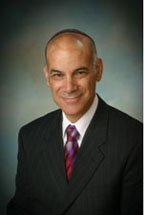 SAN DIEGO—
When I was a college student I took a course in behavioral psychology which was based upn the work of B.F. Skinner. Skinner believed that most human behavior was learned. People acted in accordance with the how they were conditioned (rewarded or punished) by their surroundings. Although heredity played a role in the creation of human personality and activity, it was minor compared to the role of environment. SAN DIEGO—
When I was a college student I took a course in behavioral psychology which was based upn the work of B.F. Skinner. Skinner believed that most human behavior was learned. People acted in accordance with the how they were conditioned (rewarded or punished) by their surroundings. Although heredity played a role in the creation of human personality and activity, it was minor compared to the role of environment.
For many years I held fast to Skinner’s belief in the effects of environmental conditioning...until my children were born! From the minute they took their first breath of air they were all unique. Despite being raised in the same household by the same parents they have very different personalities, abilities, and talents. I today believe that genetics play an equal, if not greater, role than environment in the development of human personality.
In yesterday's parasha we learned that as soon as Rebecca became pregnant she was painfully aware that the twins she carried were as different as night and day: "But the children struggled in her womb, and she said, ‘If so, why do I exist?’" (Gen. 22:22) There are few parents who cannot identify with her words of desperation as they struggle to pull their own warring children apart! Even though Jacob and Esau were twins, they shared little in common besides parentage and ancestry.
The Torah does not tell us much about Jacob and Esau’s childhood but informs us: "When the boys grew up, Esau became a skillful hunter, a man of the outdoors; but Jacob was a mild man who stayed in the camp." (Gen. 25:27) Although these boys were raised in the same home, in the same environment, with the same resources, and by the same parents, their lives' paths took very different directions. Esau became a gruff outdoors man and Isaac a quiet thoughtful student.
The Midrash notes the disparity between the boys similar childhoods and adulthoods when it cites Rabbi Pinchas’ comments in the name of Rabbi Levi in discussing the phrase "When the boys grew up....": "To what may this be compared? To a myrtle tree and a briar bush that grew up side by side. When they matured they flowered. One produced fragrance and the other thorns.
"Up until the age of 13 (Bar Mitzvah, the age of majority) Esau and Jacob were reared together. They went to school together and returned home together. But when they reached the age of 13 one continued on to the study house and the other to houses of idolatry." (Breisheet Rabbah 63)
It must have been very painful for Isaac and Rebecca to watch the sons they loved grow in such different directions. They must have wrung their hands and cried: "Where have we gone wrong? We have given our children everything. We sacrificed for them, treated them alike, and worked to instill in them our ideals and values, and yet they have matured into very different and distinct adults. One has followed in our footsteps and the other has run away from everything we hold dear."
Isaac and Rebecca had to learn the same lesson all parents learn. We cannot control the type of adults our children will become nor can we be responsible for their adult actions. All we can do is raise our children with thoughtfulness, understanding, discipline, and love, and pray that at least some of it rubs off.


AMAZING STORIES OF JUDAISM
Why Baruch keeps the kippah on his head
By Rabbi Baruch Lederman
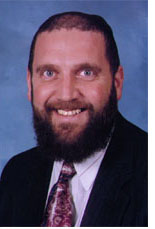 SAN DIEGO—Yaakov is known for the midah of emes (quality of truth) as we say teetain emes l'Yaakov. He had many struggles throughout his life which molded him to a perfect model and SAN DIEGO—Yaakov is known for the midah of emes (quality of truth) as we say teetain emes l'Yaakov. He had many struggles throughout his life which molded him to a perfect model and
understanding of emes. Our struggles teach us much, as the following true story illustrates:
Baruch Cohen, Esq., attended yeshiva from preschool to high school and spent six years studying in post high school yeshiva, before entering law school on Los Angeles. Prior to his law school graduation, in the late 1980s, the dean called him with interesting news. An extremely prestigious law firm had contacted him with an invitation for Baruch to interview.
This was an amazing development. First of all, Baruch had not even sent a resume to that firm. Secondly, even if he had, the chances of landing an interview were almost nil. This prominent Wall Street firm, which recently expanded into L.A., was one of the top in the nation and one of the most selective. Normally one would have to be a graduate of Harvard or Yale to even be considered by this firm. Baruch was a good student from a good law school, but the school's ranking was not Ivy League high. In fact the dean told him that none of his graduates had ever been invited for an interview by this firm.
"Baruch, I know you always wore that religious skullcap all through law school, and you still wear it now that you are clerking in bankruptcy court, and I respect that," the dean said, "But now you have an opportunity to get in to an elite firm. The skullcap could turn them off and cost you the job."
Baruch was now torn. He had worn the yarmulke (ritual skullcap, also known as a kippah) all his life. As a kid he was beaten up by neighborhood boys for wearing it, but, he would rather have a bloody nose than no yarmulke on his head.
Before he entered law school he worried that pursuing a career in law could force him to remove his precious yarmulke. Indeed, to this point in his brief career he had always worn his yarmulke. But now he had an opportunity of a lifetime. The experience and prestige of being associated with this firm, as well as the six figure starting salary was a dream come true. He was starting a family. He had a wife and young daughter to support.
He did his due diligence and asked other religiously observant Jewish lawyers. They all told him that wearing a yarmulke at work was just not done. He even spoke with a prominent Rabbi who told him that it is permissible to go without a yarmulke to pursue a parnassa (livelihood). Yes, he could remove his yarmulke he thought - but did that mean he should?
After much soul searching, he finally decided that this was too big an opportunity to jeopardize, so he went to his interview bare headed. He still felt ill at ease, but at the same time he felt confident in that he had sought advice from the experts and that no matter how wrong it felt to him, he was doing what he was told to do. He went into the big fancy building and found his way to the interviewer's office. He was seated in the reception area. Finally the secretary told him that he could go in to the interviewer's office. He entered the room.
Nothing could have prepared him for the shock that awaited him. There in front of him was the interviewer, sitting at his desk, clad in a yarmulke. The interviewer looked at him and his uncovered head with equal shock and said, "Where is your yarmulke?"
Baruch was frozen. He was numb. He couldn't even feel his hands to find which pocket his yarmulke was in.
The interviewer continued, "Do you know why you got this interview? I happened to be in bankruptcy court and saw you clerking for the judge. It intrigued me that someone in Los
Angeles would have the conviction to proudly wear a yarmulke while working in a court. I researched you. I found that you spent six years studying Talmud, in a prominent
yeshiva before entering law school. That is an outstanding combination.
Now you show up to this interview without a yarmulke?!
I also know that you come from a long line of rabbis. You studied in the finest Yeshivos. I checked all that out before contacting your dean. Now when the opportunity presents itself, look at you. You're a sellout. I am so deeply disappointed in you. You'll never make it in this firm - this is a firm of leaders, not followers. This interview is over."
Baruch was sent home reeling. He felt lower than he had ever felt before. He then shed tears, not because of the job, not because of the harshness of the rebuke; but because deep down he felt the interviewer was right.
He resolved from that point to only do the right thing, and never accept the argument from others that 'this is the way things are done.' From that point on he never removed his yarmulke for fear of what an employer, client or jury might think. Let them think what they will. He was determined to do the right thing and people would just have to recognize that.
Today Baruch Cohen is a successful trial attorney in Los Angeles, who has inspired many with the profound perspective that he acquired the hard way. [The foregoing true story was told to me by Baruch Cohen, Esq.]
Dedicated by Buzz Kaufman in memory of his uncle Nathan J. Marx.

Scholars-in-residence
program
Presentations are free; kosher meals moderately priced
● Rabbi
Motti Berger, founder of "Jews for Judaism," Nov. 16-17
● Rabbi
Yakov Horowitz, founder, Project Y.E.S. (Youth Enrichment Services)
for
Agudath Israel, Jan. 4-5
● Rabbi Ari
Kahn, director, Foreign Student Programs,
Bar Ilan University, Israel, Feb.
22-23
Call us for details at (619)
287-9890 |

SAN DIEGO JEWISH BOOK FAIR
U.S. standing in the world depends on clear objectives—Dennis Ross
By Joel A. Moskowitz, MD and Arlene Moskowitz, JD
LA JOLLA, California—There are many “how to” books. To write a book which purports to tell the reader how to …”restore America’s standing in the world” might suggest chutzbah or courage or both.
Dennis Ross, a much lauded expert on international diplomacy, spoke to a full house of rapt citizens about his book Thursday evening, Nov. 8, at the San Diego Jewish Book Fair. He explained how he was able to serve both Republican (George H.W. Bush) and Democratic( Bill Clinton ) administrations. “I had experience working with Israelis and Palestinians," he quipped.
The recipe for restoring America's standing includes a blend of diplomacy, coercion, threats and economic leverage. Necessary as well are a clear framing of the issues which others will find compelling. Intelligence is key to identifying threats and opportunities. “Timing is to statecraft as Location is to real estate.”
In Ambassador Ross’ opinion, the current administration has utilized all the above tools but failed in having a sensible objective. In the case of Iraq, two goals were to extirpate the threat of weapons of mass destruction (WMD) and at the same time, hopefully, to promote democracy. Concerning WMD, the defective approach was that the U.S. didn’t apply enough force to locate the sites while simultaneously ensuring that the borders were secure enough to prevent such weapons from being spirited away. There was insufficient military presence to control looting. What drives the current administration, Ross continued, was a faith-based assessment – not reality. It wasn’t unknowable that there we would have to face an insurgency, sectarian violence and a dearth of law and order.
Compounding the errors made by the present administration was a refusal to accept the recommendations of other counse. For example, he said,.the CIA urged that a simulation be run to consider what would happen should Saddam be eliminated. Contrary opinions were either discredited or discounted.
Ross’ view of the future in Iraq was discouraging. With a central ‘government’ with little power, it is likely that some form of tribal sharing of the economy might work. He foresees that these disparate groups will fight it out making it necessary for the U.S. to stay in Iraq for another 10-15 years as a referee.
Ambassador Ross’ talk also touched on the actions of Iran as well as the Israeli-Palestinian conflict with special attention to Hamas. One idea Ambassador Ross shared would be for Israel to obtain funding from the other Arab nations such as Saudi Arabi, with the intention of building pockets of successful society with housing, jobs and medical facilities for the Palestinians.
These would serve as a model for the unhappy, discouraged Palestinians and ween them from misguided, self defeating behaviors.
Ross’ book, Statecraft and How to Restore America’s Standing in the World consists of 371 detailed pages. The publishers held off releasing it until deep into the presidential election season. A motive may have been that whomever becomes our next President would be foolish not to hire someone who writes “a how to book” to repair America’s image in the world.
Writer Joel Moskowitz had a letter published in the Jerusalem Post several years ago suggesting a “Peace Piece by Piece” plan similar to the idea outlined by Ross. It was based upon psychiatric principles of dealing with rebellious populations. Sadly, little notice was taken except for some death threats against Moskowitz.
< BACK TO TOP


SAN DIEGO JEWISH BOOK FAIR
Viorst has kept a generation laughing
By Sandy Golden
LA JOLLA, California—Judith Viorst, whose humorous writings have now spanned more than a generation, describes everyday situations in both poetry and prose, with humor and pathos, sprinkled with a Jewish ‘tam." The author of Alexander and the Wonderful, Marvelous, Excellent, Terrific, Ninety Days addressed the San Diego Jewish Book Fair on Thursday, Nov. 10, at a luncheon cosponsored by Hadassah.
From the laughter and nods of agreement from the warm and welcoming intergenerational audience, it was apparent that a number of those present, like myself, had been Viorst fans for many decades, probably ever since the arrival of the original “Alexander” some thirty years ago, in Alexander and the Terrible, Horrible, No Good Very Bad Day.
Describing his feelings on a particularly “very bad day”, and what he had planned to do about it, the original “Alexander," (based on Viorst’s middle son, when he was about 7 or 8) quickly became a classic for children, as well as to countless parents, teachers and librarians.
Now a musical, “Alexander” has been performed all over the world, including, at the Lawrence Family JCC’s Garfield Theatre, where Viorst delivered her luncheon lecture.
In her new book, Viorst describes what happens when “Alexander”, now grown up, and himself the father of three, moves back into Mom and Dad’s, while they are having their house renovated. Can Viorst refrain from giving her grown-up children advice? Can her children refrain from taking it?? Read on!


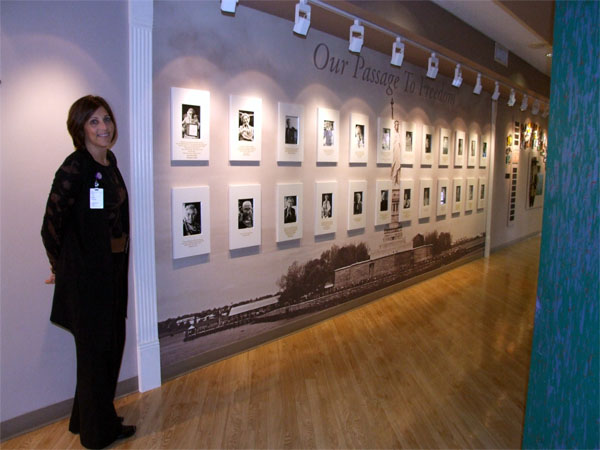
HISTORY EXHIBIT—Pam Ferris, president and CEO of Seacrest Village, stands at entrance to Hall of History exhibit at the Encinitas campus.
THE JEWISH CITIZEN
Hall of History at Seacrest Village recalls the residents of 54th Street Hebrew Home
By Donald H. Harrison
 ENCINITAS, California—Most residents of what once was called the Hebrew Home for the Aged in San Diego have passed on, but their memories still are alive, thanks to a permanent Hall of History housed at the Jewish home’s successor institution, Seacrest Village of Encinitas. ENCINITAS, California—Most residents of what once was called the Hebrew Home for the Aged in San Diego have passed on, but their memories still are alive, thanks to a permanent Hall of History housed at the Jewish home’s successor institution, Seacrest Village of Encinitas.
About two dozen photo portraits grace the hallway in the Lipinsky Family Administration Center of the 10-acre Seacrest site—along with quotes from many of those pictured about their memories of seeing the Statue of Liberty for the first time and of being processed through the Ellis Island Immigration Station in the New York-New Jersey harbor.
Pam Ferris, chief executive officer and president of Seacrest Village, hopes that family members of the former Hebrew Home residents will contact her to obtain a digitalized image of their departed relative, and perhaps to share some information about their lives for further historical research.
Besides the “Passage to Freedom” exhibit, a couple hundred plaques taken from the walls of the old 54th Street Hebrew Home also hang in the Jeanne & Arthur Rivkin Heritage Hall.

Some plaques from the former 54th Street San Diego Hebrew Home for the Aged
“I believe this is truly a heritage hall,” said Ferris, noting that the old Hebrew Home represented a half-century of history of San Diego’s Jewish community. It was opened in 1946 and closed in 1996, when the community moved its resident senior citizens to Encinitas. The grounds and buildings of the old Hebrew Home were purchased by the Jacob Health Care Center, which serves elders of all faiths.
“When people come and walk down this hall and look at the plaques, I often hear them say, ‘Oh that was my grandmother’ or ‘that was my great aunt’ … There’s a whole history here.”
She added that an employee once asked her ‘why all the plaques and donor signage’ and “I said a lot of people do give anonymously but many don’t and a big reason for this is they want to set an example.”
She explained: “I see this as a way for families to teach their children about giving, whether it be to this organization or any other organization. The plaques are reminders to their children, and their children’s children.”
The memories collected from the immigrant generation about their arrival in America varied in intensity, often depending on the age the person was upon arrival to U.S. shores. The Hebrew Home residents were recorded as they spoke, their grammar sometimes reflecting the fact that English was not their native languages.
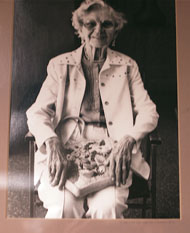 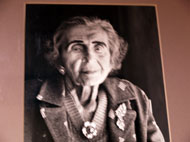 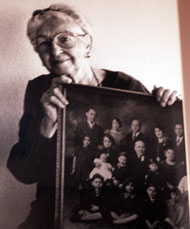
Lenna Saperstein, Jean Lewis, and Pauline Kirchner
Lenna Saperstein was just 2 ½ when she arrived in 1901 from Russia. “My father was the first one over here, and then he sent a ticket for my mother, my brother and I,” she said.
Jean Lewis, who was 4 when she arrived in 1905, said: “I came from Russia with my mother and my older brother. I was just a baby, a kid. I remember to this day standing on a ship looking over and holding a little kitten in my arms.”
Pauline Kirchner was 11 upon her arrival from Odessa in 1907: “The Statue of Liberty to us is a great deal,” she said. “I cried when I saw it.”
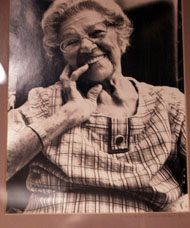 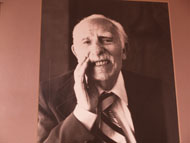 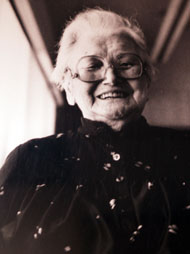
Julia Pochter, Benjamin Hyman, Selma Rosin
Julia Pochter, who was 11 in 1902 when she immigrated from Kiev, Ukraine, said" “The Statue of Liberty I remember. I see my father in the water on a little boat. He recognized us and shook his hands at us.”
Benjamin Hyman was of bar mitzvah age, 13, in December of 1904 when he arrived from Yulbrick, Kovno, Russia: “I stood on board on a stormy night,” he recalled. “There was a wind blowing. I could have easily blown over the rails. I wondered if the wind blew me over, which way would I swim.”
Selma Rosin was 15 in 1910 when she came from Russia: “One night when we saw the flicker of light—the Statue of Liberty—that is an everlasting memory,” he said.
Joseph Asher was 16 in 1914 on his arrival from Russia. His eventual wife, Betty, came at 13 in 1913. “When we got to America on the boat, everyone went on top to see it—we were all excited and talking about it,” said Joseph. “You know, it gets to you too: it was a beautiful sight.”
Anna Garren, then 17 and from Russia, recalled the immigration process: “I had to tell them how I came to America. The judge was so good to me. I was just crying. They said ‘don’t you worry’; they wouldn’t send me back.”
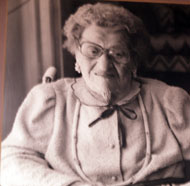 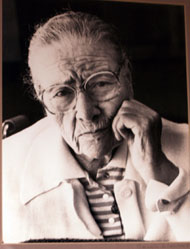 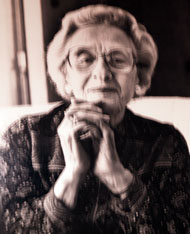
Minnie Braun, Lottie Rubin, Sarah Jacobs
Minnie Braun, a Russian Jew who was 19 on arrival in 1907, said: “It was wonderful. I never seen such a big city. I was born in a little country town. My father bought us bananas. We didn’t know how to eat them.”
Lottie Rubin was 21 when she came from Poland in 1921. “I was scared. I was crying because we didn’t have no mother here, no father. It was bad for us.”
Pauline Haber, who was 22 in 1914 when she came from Lemberg, Poland, remembered: “We were so excited on the deck, looking at the Statue of Liberty; it was beautiful.”
Even though she was already an adult, at age 24, when she came in 1920 from Lishna, Poland, Sarah Jacobs recalled that the trip, “wasn’t easy, it was hard. When you are young, you can stand everything. You are full of hope,full of going, doing, doing, doing. You do, that’s all!”
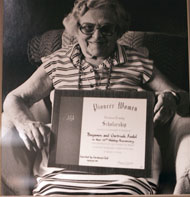 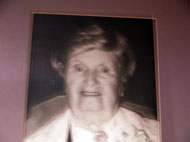 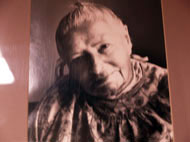
Gertrude Fisdel, Fannie Alperin, Fannie Jacobson
Gertrude Fisdel was 24, and her husband, Ben, was 27 when they arrived from Romania. “I wanted to come because my father was here,” Gertrude recalled. Her husband on the other hand “had nobody here. His mother gave him a silver cup. When he comes to the United States he should drink l’chaim with his father-in-law.”
And Sophie Rosenthal was in her late 20s when she arrived in 1934 from Paris, France. “When I first saw the Statue of Liberty I was proud because in France (which gave it as a gift to the United States), we spoke a lot of it.”
Not all the people whose photos are mounted in the exhibit were recorded concerning their thoughts about immigration. But they too were part of the immigrant generation whose memories make up a part of the mosaic of our people.
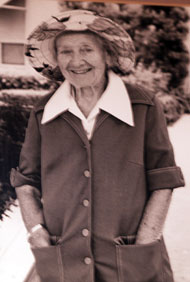 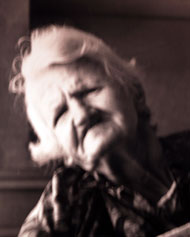 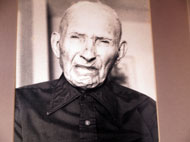
Sylvia Kramer, Sophi Mallof, Issac Simon
For the record, four of them were named Fannie of Fanny– Fannie Alperin, Fanny Bernhardt, Fannie Crane and Fannie Jacobson. Others were Sylvia Kramer, Sophie Mallof, Barney Pearl, Lillian Sapiro, Issac Simon and Minnie Zeidell.
Also on exhibit in the Jeanne & Arthur Rivkin Heritage Hall are the stained glass windows by Leslie Perlis that previously had been installed in the lobby area of the 54th Street Hebrew Home.

Stained glass windows by Leslie Perlis were previously at Hebrew Home
< BACK TO TOP


Publishers tell changes in format and frequency for San Diego Jewish World
SAN DIEGO—We have received many kind comments from readers about our new layout, for which credit and thanks are due to Kate Purdy of Island Graphics of surburban Coronado. We are continuing to tinker both with format and frequency of the San Diego Jewish World to make our product more meaningful and attractive both for its readers and its writers.
Although we tried dilligently to honor the Shabbat by uploading our publication to the web just before Shabbat on Friday afternoons and then not uploading the next edition until late Saturday night, after Shabbat was over, this schedule has proven to be impractical. Especially now, with nightfall coming earlier and earlier in these winter months, we found ourselves in an unseemly rush to put out the Friday afternoon edition.
Accordingly, we have decided to change our publication schedule from evenings to mornings, and to drop completely our Saturday edition. Thus San Diego Jewish World will publish six rather than seven editions per week. The change is effective with this Sunday morning edition. Credits will be extended to advertisers who purchased advertising in advance (for which we thank them!).
Another major change which has been in effect since September 19 was our decision to run only bylined or signed stories—no press releases, no recycled news from wire services, no calendar items. The theory behind that was that it seemed a waste of your time and ours to provide articles that are readily available to you elsewhere on the Internet. Do you want to know what events are coming up in the San Diego Jewish community? Check the calendars of the United Jewish Federation and the Agency for Jewish Education to which we provide links at the top of our standing column on the left side of this page. Do you want to know the latest news from Israel? Use Google, Yahoo or Ask search programs to bring it up in an instant.
Not duplicating such articles has allowed us the time to seek, develop and write original stories that you might not otherwise see. As we share columnists with some other news organizations around the world, not every story you will read in the San Diego Jewish World is unique to our publication, but a very high percentage are.
We shall keep you apprised of other changes as San Diego Jewish World evolves. As always, we are interested in your opinions and feedback. Please share your thoughts by writing to us via our email, sdheritage@cox.net. Thank you. —Donald & Nancy Harrison, co-publishers


CRITIC AT LARGE
Lars finds himself a girl in bizarre movie that will make you laugh—and also think
By Larry Zeiger
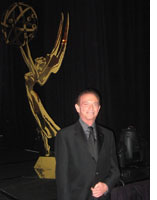 SAN DIEGO—One of the most delightful, moving, and well-written films of 2007 has at its core a very funny premise. In Lars and the Real Girl, Lars lives a very lonely life. He lives in a garage behind his brother and sister-in-law's house. He works at a desk job in a small cubicle of an office building. He does his work but feels uncomfortable communicating with his colleagues. Karin, his sister-in-law played by the outstanding actress, Emily Mortimer, tries to look after Lars, and often invites him to dinner, but Lars is afraid to socialize and is terrified of being with other people. As a result, he almost always declines invitation from anyone, even his family. But this is all about to change is one of the most unexpected plot twists of recent movies. SAN DIEGO—One of the most delightful, moving, and well-written films of 2007 has at its core a very funny premise. In Lars and the Real Girl, Lars lives a very lonely life. He lives in a garage behind his brother and sister-in-law's house. He works at a desk job in a small cubicle of an office building. He does his work but feels uncomfortable communicating with his colleagues. Karin, his sister-in-law played by the outstanding actress, Emily Mortimer, tries to look after Lars, and often invites him to dinner, but Lars is afraid to socialize and is terrified of being with other people. As a result, he almost always declines invitation from anyone, even his family. But this is all about to change is one of the most unexpected plot twists of recent movies.
One evening, Lars surprises Karin and his brother, Gus, and shows up at their house with a glimmer of hope, a sign of life in his eyes. He has a friend he has invited to dinner. In Lars mind, she is a lovely young woman named Bianca, a Brazilian/Danish missionary he met on line who sadly is wheelchair bound, but this appears to make Bianca even a stronger attraction to Lars, because he now has someone that he can care for. Karin and Gus, however, are shell-shocked when they meet Bianca as is the entire community. And the reason – a devilishly and witty conceit – Bianca is not real – she is a fully dressed life-size silicone doll ordered off the Internet. To Lars, however, she is as real as anyone in the small community in which he lives and ironically, Bianca has brought Lars to life.
This may seem like a bizarre (and it is) premise for a movie, but the writing by Nancy Oliver and the direction by Craig Gillespie make this one of the more intelligent comedies to come along in years. This is a story of loneliness and the positive nature of human interaction that is so essential to life. As the story progresses, Lars is taken by Gus and Karin to see a psychiatrist (played by Patricia Clarkson) who feels that the best way for Lars to cope with this issue is for everyone to go along with Lars’s belief that Bianca is a living, breathing woman. The entire community, because they truly feel for Lars, act as if Bianca is part of their lives as well. The people of the community are ultimately touched by Bianca as they learn to reinterpret their own lives and learn to value what is and is not important in their relationships. The film is not only hilarious in parts but also very poignant without being overly sentimental with a very moving thought-provoking ending.
The writing by Nancy Oliver is brilliant as she tackles many philosophical and psychological issues of an individual's behavior. Lars, at first glance, is a dull one-dimensional character but as the film progresses he becomes a mirror of many of us. He is not sure the direction in which his life is going and initially, there does not seem to be anyone who can help him. Through Bianca and a community who suddenly learns to care, Lars finds acceptance and meaning in his life. How this happens is beautifully realized by Oliver’s moving and often witty screenplay.
Ryan Gosling, who was nominated for Best Actor of the Year (2006) in Half Nelson, should once again be nominated for his work in this film. This is one of the most outstanding performances I've seen in a long time. Gosling as Lars does not have a great deal of dialogue, but you can read so much in Gosling’s facial expressions and mannerisms. At times he seems barely alive, a desperately, lonely individual and watching his joy and excitement as he begins to become more involved in life as the story progresses is truly one of the great delights of this or any other film I’ve seen recently.
The writing, direction, and superb performances combine to make Lars and the Real Girl one of the best films of the year. I strongly this wonderful film.
(Editor's Note: There is a Jewish "back story" to Lars and the Real Girl. According to the San Francisco Chronicle, Gosling, a former television Mouseketeer, is a huge fan of Gene Wilder—and suggested that if anyone could play the part of Lars better than he could, Wilder was the one. Also of Jewish interest is the fact that in one of his more recent films, The Believer, Gosling played a neo-Nazi who actually was Jewish.}
< BACK TO TOP


JEWISH LICENSE PLATES
San Diego Grandpa and Israeli Native
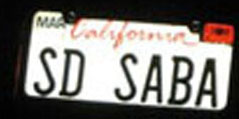 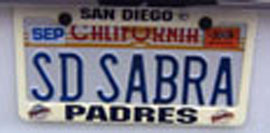
SAN DIEGO—Melanie Rubin, ever on the lookout for Jewish-interest license plates, located two that are nearly alike: SD SABA and SD SABRA. "Saba" is Hebrew for grandfather, so we know that a very proud zayde (as he'd be called in Yiddish) owns this one. "Sabra" is a nickname for Israeli natives. The nickname is taken from the cactus of the name, which is said to be tough on the outside and sweet on the inside. SD, of course, stands for San Diego. As always, we will add the latest finds to the Mainly Melanie Rubin collection of Jewish license plates.


SAN DIEGO JEWISH WORLD
THE WEEK IN REVIEW
THURSDAY, NOVEMBER 8
Gary Acheatel in Ashland, Oregon: "Carter, Walt, Mearsheimer fail 3-D test in their assessments of Arab-Israeli conflict"
Carol Davis in Vista, California: 'Argentina proves a crackling refuge for European family in The Magic Fire'
Ira Sharkansky in Jerusalem: "U.S. policy-makers have a record of mistakes in U.S.; is Israel next?"
Photo Story: JFS relocates its senior center to Congregation Beth Israel
WEDNESDAY, NOVEMBER 7
Sherry Berlin in La Jolla, California: "Pre-school playground was a wonderful venue for teaching at Jewish Book Fair"
Garry Fabian in Melbourne, Australia: "Australian children enlisted in battle against global warming"... "Another rating system for political candidates: how do their websites compare with each others?" ... "South African rabbi visits Queensland" ... Israeli ambassador's comments may have been 'reason' for vandalism of Jewish cemetery" ... "Same-sex unions attacked by Orthodox rabbi."
Joel A. Moskowitz, MD and Arlene S. Moskowitz, JD in La Jolla, California: "Audience kvells over Tony Kushner"
TUESDAY, NOVEMBER 6
Donald H. Harrison in La Jolla, California: "An internationalist makes Israel his cause."
J. Zel Lurie in Delray Beach, Florida: "Not only enemies but some would-be friends believe the Jewish stereotypes."
Joel A. Moskowitz, M.D. and Arlene S. Moskowitz, J.D. in La Jolla, California: "How Jews became Germans: they didn't."
MONDAY, NOVEMBER 5
Shoshana Bryen in Washington, D.C.: "Oil prices are so high, it's time to pull out the stops in behalf of alternative fuels"
Cynthia Citron in Los Angeles: "For tsuris like Sheldon and Mrs. Levine's, you can stay home and save your money"
Judith Apter Klinghoffer in Cherry Hill, New Jersey: "Israel's peace dividend could be dwarfed by impact on the Palestinian economy."
Norene Schiff-Shenhav in Fallbrook, California: "Our unforgettable week of fire, stress, separation, love, kindness and relief"
SUNDAY, NOVEMBER 4
Donald H. Harrison in San Diego: "Shanghai Jews experiences varied greatly depending on their countries of origin"
Joe Naiman in Lakeside, California: "Jewish owners brought pro basketball to San Diego County but couldn't sustain it"
Sheila Orysiek in San Diego: "City Ballet's 15th season in San Diego provides several views of classical ballet"
Ira Sharkansky in Jerusalem: "Olmert's optimism on the eve of the Annapolis conference mystifies 'realists'"
SATURDAY, NOVEMBER 3
Dov Burt Levy in Salem, Massachusetts: "3 wishes from deep inside Red Sox Nation"
Ira Sharkansky in Jerusalem:""Breakthrough in Annapolis? Don't hold your breath that anything will happen"
Dorothea Shefer-Vansonin Mevasseret Zion, Israel: "A trip into my unknown German past"
David Strom in San Diego: "Collection of Chanukah essays stirs memories of family trips and gelt"
< BACK TO TOP
|
|

